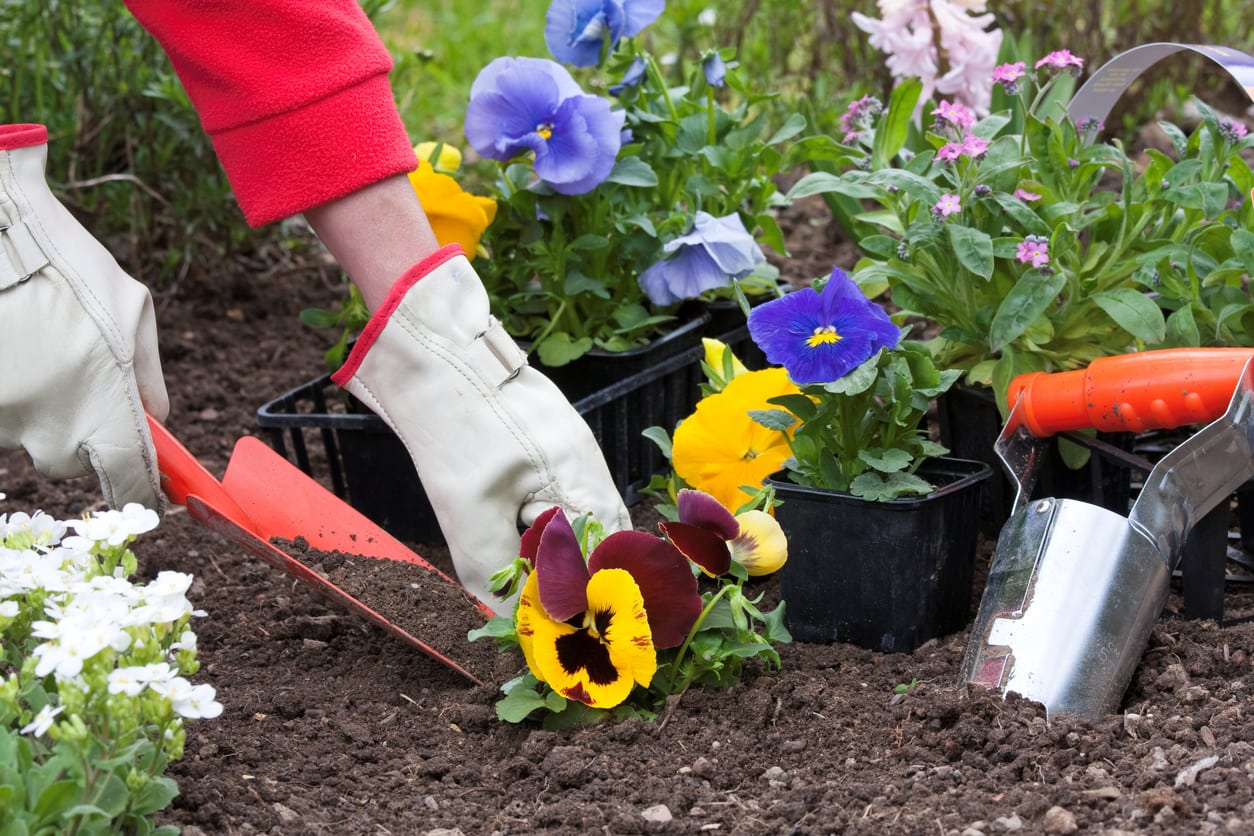Planting Pansies Outside: When Is Pansy Planting Time In The Garden

Pansies are popular winter annuals that stay bright and blooming even in snowy, cold elements. In order to help them thrive through the worst of winter conditions, it’s critical to stick to a specific pansy planting time. Read on to learn more.
Prepping for Planting Pansies Outside
Pansies have the incredible ability to survive freezing winter temperatures and come out strong in the spring season. However, they can only be resilient if they’re planted at the proper time and in an ideal setting. Fall is the best time to plant pansies. For best results, prepare the planting bed with a 3 to 4 inch (8-10 cm.) layer of organic material, like compost or peat moss. Aim for a planting spot that will get about six hours of full sun each day. Pansies can grow in partial shade but will sprout best with ample sunlight.
When Should You Plant Pansies
You will know it’s time to plant pansies in the fall season when soil temperatures are between 45 and 70 degrees F. (7-21 C.). Premature planting when temperatures are too warm will make the plant turn yellow and leave it vulnerable to frost damage or pest and disease infestation. On the other hand, planting pansies outside when soil temperatures drop below 45 degrees F. (7 C.) causes the plant’s roots to shut down, meaning it will produce few, if any, flowers. You can check your soil’s temperature with a soil thermometer to figure out when to plant pansies in your area. Also, consider your USDA plant hardiness zone to determine the best pansy planting time. Pansies are hardy in zones 6 and up, and each zone has a slightly different planting window. In general, the ideal time to plant pansies is late September for zones 6b and 7a, early October for zone 7b, and late October for zones 8a and 8b.
What to Do After Planting Pansies Outside
Pansies should be well-watered right after planting to get them off to a good start. Be sure to water the plant’s soil and avoid wetting the flowers and leaves, which could attract disease. A layer of mulch added to the pansy plant bed will help prevent any cold weather damage come winter.
Sign up for the Gardening Know How newsletter today and receive a free copy of our e-book "How to Grow Delicious Tomatoes".